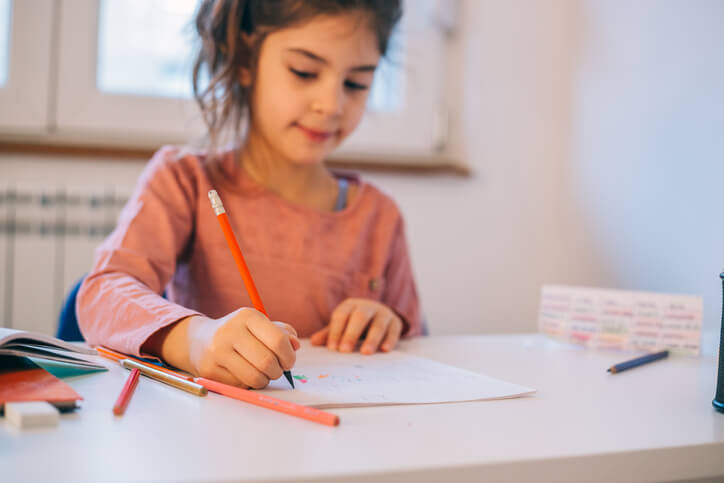School is back in session, and with it comes the familiar assignment that many young children tackle in their first few years of education — the family tree.
While it can be an interesting assignment for many families, it can be a confusing and even stressful one for those whose families have come together in nontraditional ways. While processes such as adoption, surrogacy and gamete donation are more common than ever, they still don’t tend to cross teachers’ minds when it comes to assigning out these traditional family-based projects.
If your child was born via surrogacy and gamete donation, you may be unsure of how to tackle this assignment when your child pulls it out of their backpack. The final decision will always be up to you and your son or daughter, but we’ve offered five ways you may address this topic in a healthy and positive way:
1. Consider whether it’s worth including.
The first thing to remember? That your family’s business is your business alone. Just because your child shares a genetic connection with a donor — anonymous or identified — doesn’t mean that you have to share that news with everyone.
Family trees are assigned for many reasons — to teach students about genetics, to help students get to know each other better, to practice presentation skills, and more. Learn what the focus of this project is for your child’s class. While it’s never a good idea to lie about your child’s personal history, when you’re the parent, it is always your role to safeguard your child’s story and whether or not you want to share it with people outside your family.
2. Ask your child about their thoughts.
Before you tell your child to include a sperm or egg donor on their family tree, make sure to talk to them! Children have as much right to their own birth and family story as anyone else, and it’s important that they play a role in their family tree assignment — and who they want to put on it.
Every donor-conceived and surrogacy-born child should know their personal story from an early age. If you’ve done your job right, your child will be aware of their surrogacy or gamete-donor story. They will likely have their own feelings about it, too.
3. Use an alternative family tree design.
When children are brought into a family in a non-traditional way, a traditional family tree structure can’t capture those nuances. If you and your child decide to move forward with a family tree, you should brainstorm together to find a way to best represent your child’s heritage and genetic background.
You might simply choose to add another line from your child to their sperm or egg donor, designating the difference between a genetic donor and an actual parent. Or, you may add your surrogate in the same way, with a line that makes it obvious your child isn’t genetically related to the surrogate.
Some adoptive and other non-traditional families choose to create “family forests” instead of trees. This way, they can emphasize the most important people in a child’s life, without necessarily pointing out genetic connections and non-genetic connections.
There are several ways you can create a non-traditional family tree. Work with your child to determine which is the best design for his or her preferences.
4. Talk to your child’s teachers about alternative assignments.
After discussion with your child, you may decide that a family tree is not the best assignment — especially if there are complications in your child’s family history, related or unrelated to their surrogacy story. Many teachers will be happy to work with you to find an alternative assignment. If your child doesn’t want to make a family tree based on their background, consider completing a family tree for a famous person in history, such as a president.
This brings up a good note for any parent: It’s a good idea to make your child’s teacher aware of any non-traditional aspects in your child’s family, to avoid awkward and complicated teaching moments throughout the whole school year.
5. Include the donor on the family tree — and use it as a teaching moment.
If you and your child are comfortable, don’t be afraid to use the inclusion of your child’s donor as a great opportunity to share the beauty of assisted reproduction methods with the classroom. While your child may be the only one in class conceived this way, remember that the number of nontraditional families in the U.S. is growing. Education plays a great role in tolerance and acceptance.
If your child is excited to share their surrogacy or donor story with their classroom, you’ll want to help them prepare for the class conversation. Give them some answers to ignorant comments and questions claiming that a surrogate “gave them up” or that their non-biological parent is not their “real” parent. You should also consider including the teacher on this preparation, so they can guide the class conversation is a positive and accepting way.
The pride that your child has in their own surrogacy story is a great example that you are doing a great job as a parent. Support them in this assignment; it will be the beginning of a lifetime spent answering questions and educating about surrogacy and gamete donation.
Have more questions about the nuances of raising a surrogacy-born, donor-conceived child? Talk to our surrogacy specialists anytime at 1-800-875-BABY(2229).
Hear from other intended parents who have grown their families through surrogacy by following us on Instagram.
